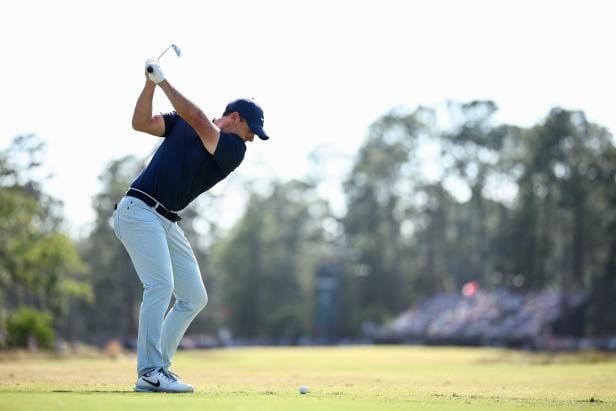Rory McIlroy’s recent loss at the U.S. Open has raised questions about his golf swing rather than his putting abilities. Despite being known as a good putter, Rory missed key short putts during the tournament, revealing a small glitch in his game under pressure. However, the real concern now is his golf swing, which has evolved since his previous major wins. Even Rory himself acknowledges that his technique is not what it used to be, expressing a desire for a complete reboot to break through the current obstacles he faces on the course.
In terms of technical changes, observers have noted that Rory’s swing has undergone significant alterations compared to his earlier successful years. His arm movement has changed, with his club positioning at the top of the backswing showing a different alignment from before. While some believe these changes may not be detrimental to his game, others argue that it could impact his ability to perform consistently, especially under pressure. The debate continues among coaches and experts in the golfing community.
One key aspect of Rory’s swing that has changed is the position of his arms and club at the top of the backswing. His arms now extend further away from his body, and the clubhead tracks differently, affecting his overall motion and possibly his shot accuracy. While these changes may not be a concern for every player, in Rory’s case, they could be contributing to his recent struggles on the course. The question remains: how much does this altered swing layout influence his performance?
Coaches emphasize the importance of a coordinated backswing that aligns the weight of the club with the direction of the arms in the downswing. This synchronization is essential for generating power and accuracy in shots, ensuring a fluid motion throughout the swing. In Rory’s case, deviations from this ideal alignment could be leading to inconsistencies in his ball striking and shot direction. The impact of these changes on his overall performance is a topic of ongoing discussion and analysis.
While Rory’s current swing may not be a hindrance to his success, there are suggestions that minor adjustments could enhance his game even further. With his exceptional talent and potential, Rory has the opportunity to refine his technique and improve his overall performance on the course. Whether these changes are necessary or beneficial remains a subject of debate within the golfing community. Rory’s commitment to excellence and his openness to technical improvements indicate a willingness to explore new possibilities for enhancing his game.
Ultimately, the decision to make changes to his golf swing lies with Rory and his team, weighing the pros and cons of potential adjustments. With his track record of success and his position as one of the world’s top-ranked players, Rory has the talent and determination to overcome any challenges he faces on the course. The ongoing evolution of his game and his willingness to adapt and grow as a player showcase his commitment to excellence and his pursuit of continued success in professional golf. As Rory navigates the complexities of his golf swing and seeks to optimize his performance, fans and experts alike eagerly await his next breakthrough on the course.


